If the monuments of the Giza necropolis were of no significance in the human story then problems in the study and interpretation of these monuments would be of no significance either. But this site could hardly be more significant. Indeed, there is a sense in which it has always been with us. It is a marker of our history – a memorial to the genesis of our civilization – and it may still have vital information to give us about ourselves. More than any other ancient place, in other words, Giza raises, and might possibly answer, all the old, fundamental questions: who we are, where we came from, perhaps even where we are going. For these reasons we can hardly afford to be indifferent to the Great Sphinx and the three Great Pyramids. For these reasons the quality of research that has been carried out around them – and that has defined and explained them – really does matter. (Graham Hancock, Robert Bauval. KEEPER OF GENESIS. A Quest for the Hidden Legacy of Mankind)
As an introduction to this article I’ve used an extract from the KEEPER OF GENESIS / The Message of the Sphinx. A Quest for the Hidden Legacy of Mankind (https://grahamhancock.com/keeper-of-genesis) by Graham Hancock and Robert Bauval. Furthermore, I’ve taken most of information given below from this very book, and I should mention the information is not new, for the book was written in the mid 1990s, and the first Russian edition was released in 1999 if I’m not mistaken. Hence, everyone who’s interested in the subject knows this information since long ago. As you have already understood, this article is dedicated to one of the most ancient structures on our Planet – the Great Sphinx of Giza. I came to like the Keeper of Genesis title given to the Sphinx, for I believe it’s a sort of a key to numerous secrets of Genesis indeed. Do you remember the riddle of Greek Sphinga? “What has four legs in the morning, two in the afternoon and three in the night, and the more legs it has the weaker it is?”
Let me cite here a nice extract from Ezoosmos book by Anastasia Novykh:
She was a winged half-woman and half-lioness who was residing on a cliff near Thebes and set one and the same riddle to all passers-by: “It walks on four legs in the morning, two legs at noon and three legs in the evening. What is it?” She ate up everyone who didn’t know the answer. Only Oedipus was able to solve the riddle, having responded that it was a human – in childhood, in maturity and in the old age. After that Sphinga threw herself from the cliff… Yet, one thing was to read the legend, sitting at home with a cup of tea in a comfortable arm-chair, and a totally different thing was to revise the legend after a psychological shock when you had just experienced a whole range of emotions during the meeting with a not less mystical stalactite-and-stalagmite Sphinx. Under such circumstances you surely perceived everything completely differently, just as if you were that very passer-by for whom the Sphinx’s riddle remained insoluble and became the cause of his or her death.
If we ponder over this deeper, it has more to do not with Sphinx itself, but rather with a person taken by surprise. What exactly causes such panic fear in us in the face of the unknown? It’s our internal unpreparedness to such phenomena and our spontaneous thinking which switches on imagination and creating horrifying pictures cast by the Animal Nature. And it’s exactly the Animal Nature that absorbs our attention and overshadows with forced fear the enormous source of spiritual power capable of surmounting any obstacles in this world. Hence, a person who is taken by surprise switches on habitual dominant in his or her consciousness. And, if he or she turns out to be an “ordinary passer-by” having the habitual Animal Nature dominant in consciousness, he or she will suffer the same fate as most people for whom this material life is their sole reality, and for whom death means not only physical, but the “spiritual end” as well. On the other hand, if a spiritual personality would appear in their place, any obstacle seeming irresistible for an “ordinary passer-by” will be just another step towards the eternity for such spiritual personality.
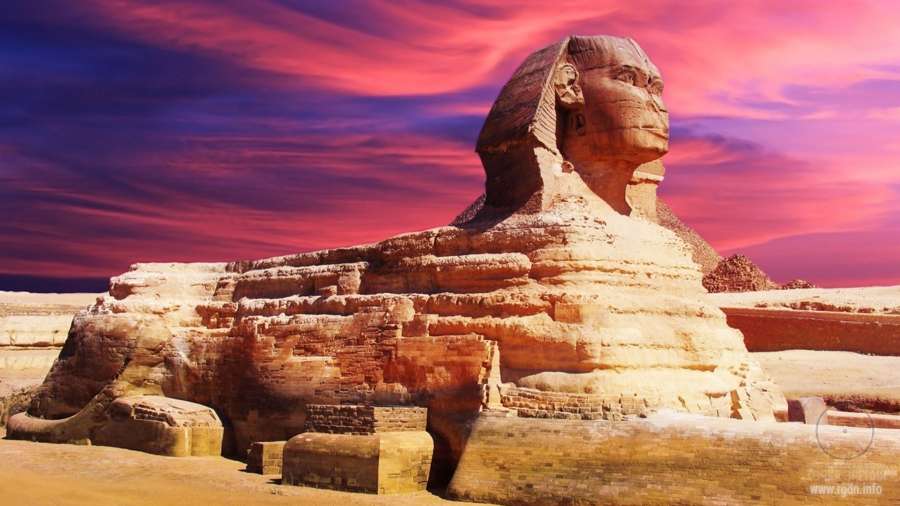
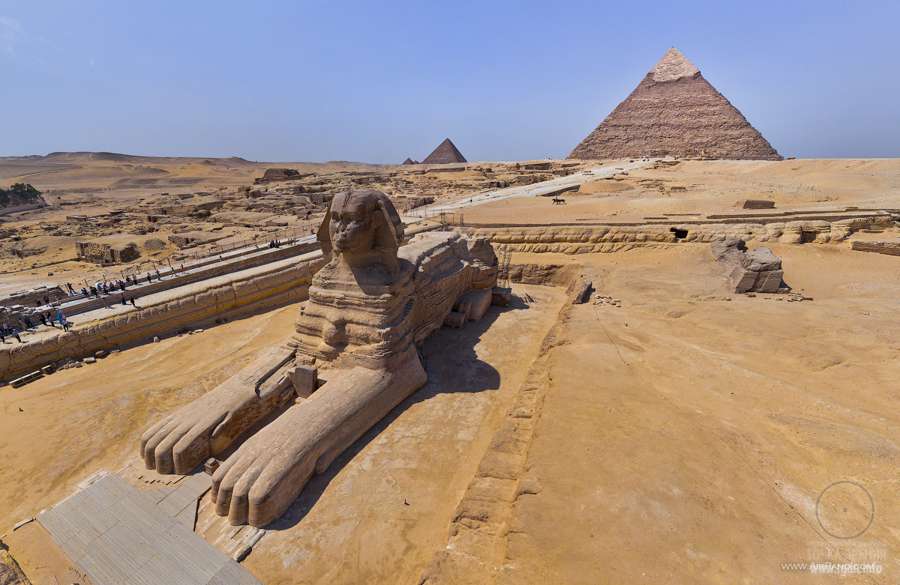

There is another interesting extract relating to the Great Sphinx. I’ve already cited it in the article Five points of the Star and now repeat it in part.
A. Novykh. SENSEI-IV
“You are right about the new cradle. It was really so. But in those times the Earth was visited even by such civilizations that don’t fit into the limits of the modern ‘historical’ concept… though their traces are found until now. Let’s take Baalbek with its huge slabs of a ‘landing ground’. Or the Great Sphinx situated not far from the ‘bottom of the flower’ and constructed of the monolith rock far before this civilization, including internal underground premises under it. By the way, this stone monument quite successfully survived the Flood.
“The Great Sphinx?!” Slava and Yura asked simultaneously.
“Yes, the Great Sphinx is an enormous sculpture of a lying lion with a man’s head and a peculiar cape hanging down from its head to its shoulders,” Sensei explained habitually. “By the way, ‘Sphinx’ is far from being the genuine name of this structure. Actually it’s a Greek word meaning ‘the one who strangles’ and originating from the verb ’squeeze’, ‘stifle’. Greeks called so this statue because, when they were in Egypt, they associated it with a character from their ancient Greek legends – Sphinga (Sphinx). In Greece Sphinga meant a fairy animal with a woman’s head and chest, a lion’s body and bird’s wings. According to the legend, this creature lived on a cliff near Thebes and asked all passers-by an insoluble riddle, and when it didn’t receive the answer it strangled them. Since their legend resembled ancient Egyptian legends about goddess Sakhmet (a lioness with a human face), daughter of god Ra, who slayed rebellious people, this name remained so in history.
At that, I would like to mention that the Greek legend emerged from a more ancient version about predator Phix which lived in Boeothia on Mount Phikion. It was a cruel monster able to swallow its prey. Oedipus defeated it in a fierce fight. And the very character of Sphinga appeared in Greece under the influence of the Asia Minor character of a winged half-virgin and half-lioness.
As for the Great Sphinx, in Egypt it was actually named Harmahis and symbolized the sun rising in the East and resurrection. But these notions resulted from earlier ideas about the Great Sphinx as the ‘Guard of gods’ home’. It wasn’t occasional, since this structure guards the secret of the path leading to the Lotus Temple, one of the most ancient underground buildings at the site.”
There are two interesting points mentioned in the above extract:
This is what we’ll talk about further below.
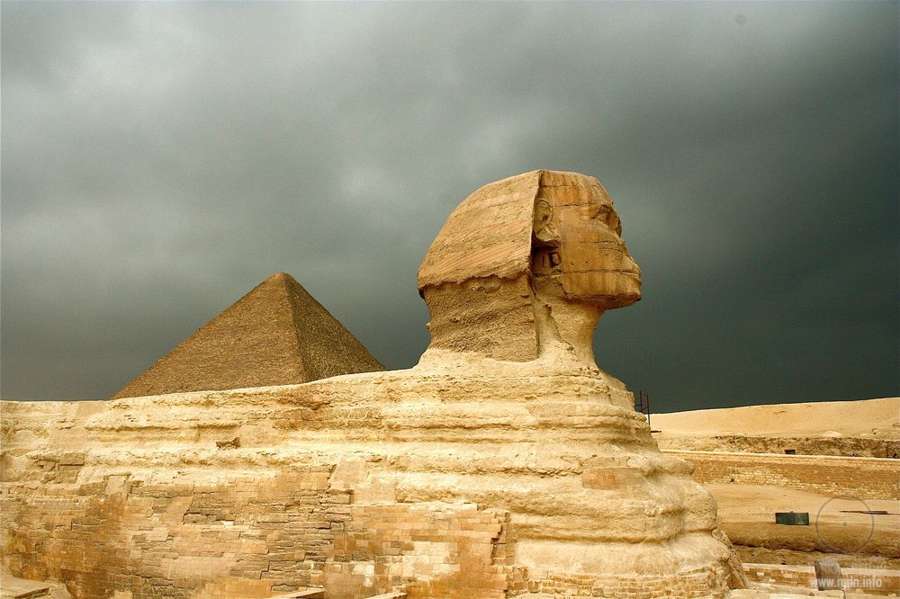
The official science point of view: Mark Lehner (Egyptologist)
The Sphinx does not sit out alone in the desert totally up for grabs as to “how old is the Sphinx?” The Sphinx is surrounded by a vast architectural context which includes the Pyramid of Khufu [better known as the Great Pyramid], the Pyramid of Khafre [“the second Pyramid”] and the Pyramid of Menkaure, pharaohs of the Fourth Dynasty. Each pyramid has a long causeway running from a Mortuary Temple on its eastern side, down to the level of the Nile floodplain, where a Valley Temple served as an entrance to the pyramid complex… Officials and relatives of the pharaohs built their tombs in cemeteries east and west of the Khufu Pyramid, and southeast of the pyramids of Khafre and Menkaure respectively. Digging at Giza for nearly two centuries, archaeologists have retrieved an abundance of material [dating to the Fourth Dynasty]. Hundreds of tombs have yielded the mortal remains and artefacts of people who composed the state administration of the Pyramid Age… We are discovering evidence of the working class and everyday life of the society that built the Sphinx and pyramids… We have evidence of the ruins of an ancient city spread out along the valley for the entire length of the Giza Plateau. All this is part of the archaeological context of the Sphinx …
An alternative point of view: Selim Hassan
Excepting for the mutilated line on the granite stela of Thothmosis IV, which proves nothing, there is not a single ancient inscription which connects the Sphinx with Khafre. So sound as it may appear, we must treat this evidence as circumstantial until such a time as a lucky turn of the spade will reveal to the world definite reference to the erection of this statue…
Why do Egyptologists continue to link the Sphinx to Khafre? One reason is a single syllable Khaf discovered on the stela of Thutmosis IV. They view it sufficient. Yet, is it sufficient for those who are interested in the truth?
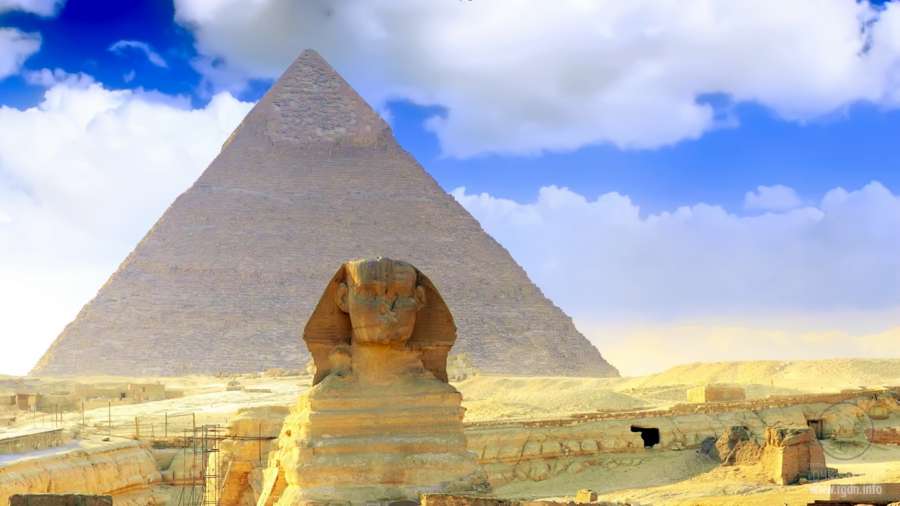
I wrote about West and Schoch in the Pendulum of Orion and Draco. Let me highlight several more points herein.
Water erosion
The origins of this controversy go back to the late 1970s when John Anthony West, an independent American researcher, was studying the obscure and difficult writings if the brilliant French mathematician and symbolist R. А. Schwaller de Lubicz. Schwaller is best known for his works on the Luxor Temple, but in his more general text, Sacred Science (first published in 1961), he commented on the archaeological implications of certain climatic conditions and floods that last afflicted Egypt more than 12,000 years ago:
A great civilization must have preceded the vast movements of water that passed over Egypt, which leads us to assume that the Sphinx already existed, sculptured in the rock of the west cliff at Giza, that Sphinx whose leonine body, except for the head, shows indisputable signs of aquatic erosion.
Schwaller’s simple observation, which nobody appeared to have taken any notice of before, obviously challenged the Egyptological consensus attributing the Sphinx to Khafre and to the epoch of 2,500 BC. What West immediately realized on reading this message, however, was that, through geology, Schwaller had also offered a way “virtually to prove the existence of another, and perhaps greater civilization antedating dynastic Egypt – and all other known civilizations – by millennia”.
If the single fact of the water erosion of the Sphinx could be confirmed, it would in itself overthrow all accepted chronologies of the history of civilization; it would force a drastic re-evaluation of the assumptions of ‘progress’ – the assumption upon which the whole of modern education is based. It would be difficult to find a single, simple question with graver implications…
West’s initial opinion was that:
There can be no objection in principle to the water-erosion of the Sphinx, since it is agreed that in the past Egypt suffered radical climatic changes and periodic inundations – by the sea and (in the not so remote past) by tremendous Nile floods. The latter are thought to correspond to the melting of the ice from the last Ice Age. Current thinking puts this date at around 15,000 BC, but periodic great Nile floods are believed to have taken place subsequent to this date. The last of these floods is dated around 10,000 BC. It follows, therefore, that if the Great Sphinx has been eroded by water, it must have been constructed prior to the flood or floods responsible for the erosion…
The logic is indeed sound “in principle”. In practice, however, as West was later to admit, “flood or floods” could not have been responsible for the peculiar kind of erosion seen on the Sphinx:
The problem is that the Sphinx is deeply weathered up to its neck. This necessitates 60-foot floods (at a minimum) over the whole of the Nile Valley. It was difficult to imagine floods of this magnitude. Worse, if the theory was correct, the inner limestone core-blocks of the so-called Mortuary Temple at the end of the causeway leading from the Sphinx had also been weathered by water, and this meant floods reaching to the base of the Pyramids – another hundred feet or so of flood waters…
With legal access to the enclosure, West recalls, Schoch, too:
was swiftly dropping conditionals… The deeply weathered Sphinx and its ditch wall, and the relatively unweathered or clearly wind-weathered Old Kingdom tombs to the south (dating from around Khafre’s period) were cut from the same member of rock. In Schoch’s view it was therefore geologically impossible to ascribe these structures to the same time period. Our scientists were agreed. Only water, specifically precipitation, could produce the weathering we were observing…
“Schoch’s case, in brief – which has the full support of palaeoclimatologists – rests on the fact that heavy rainfall of the kind required to cause the characteristic erosion patterns on the Sphinx had stopped falling on Egypt thousands of years before the epoch of 2,500 BC in which Egyptologists say that the Sphinx was built. The geological evidence therefore suggests that a very conservative estimate of the true construction date of the Sphinx would be somewhere between ‘7,000 to 5,000 BC minimum’.
In 7,000 to 5,000 BC – according to Egyptologists – the Nile valley was populated only by primitive Neolithic hunter-gatherers whose “toolkits” were limited to sharpened flintstones and pieces of stick. If Schoch is right, therefore, then it follows that the Sphinx and its neighbouring temples (which are built out of hundreds of 200-ton limestone blocks) must be the work of an as yet unidentified advanced civilization of antiquity.”
Here I guess it should be mentioned that West’s and Schoch’s opinions on the time of the Sphinx erection somewhat differed. West wanted to take the matter a good deal further than Schoch was prepared to go and felt that the geologist had been too conservative and lenient in his “minimum” estimate of 7,000 to 5,000 BC for the age of the Sphinx. Thus, West believed the Sphinx was constructed 12,000 years ago or earlier. Recently I viewed a TV program where a Egyptologist was asked about the Sphinx age and answered with confidence that it had been built in Khafre times and later on had been eroded by the wind. It’s quite interesting to listen to a person who has certain knowledge in a given field (Egyptology), knowing absolutely nothing in another field (geology), yet confidently talking about what he’s not competent in. As a matter of fact, one shouldn’t be a great expert in the field of rock destruction due to environmental factors in order to notice how the falling water was leaving its marks on a stone. Such marks are clearly visible on the Sphinx.
A little image gallery from Robert Schoch’s official website: http://www.robertschoch.com.
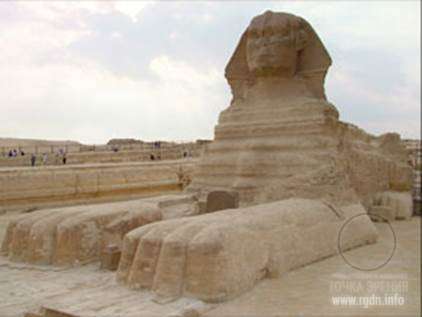
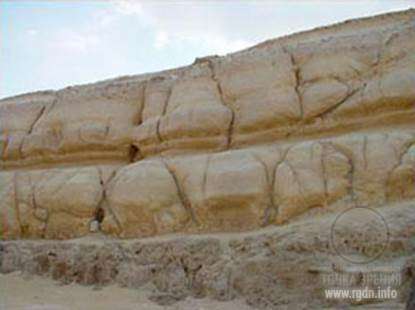
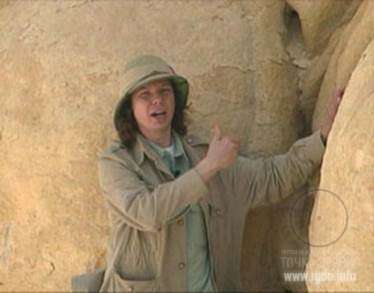
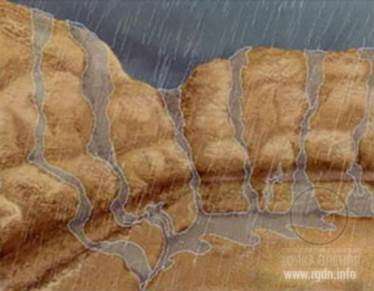
And here’s the difference between rain erosion and wind erosion.
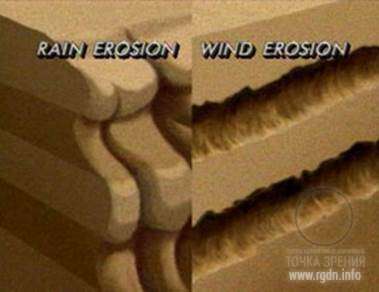
“There is a tradition which asserts that the Giza monuments stand as a last and grand memorial to a highly advanced antediluvian civilization that was destroyed by a “Great Flood”. This tradition also holds that somewhere at Giza, either beneath the Great Sphinx or within the Great Pyramid itself, is concealed a “Hall of Records” in which is preserved the entire knowledge and wisdom of the lost civilization.
Such ideas may be of very archaic origin and have continued throughout history to inspire investigations at Giza. In the fourth century AD, for example, the Roman Ammianus Marcellinus directed treasure-hunters to search for “certain underground galleries in the Pyramids”, constructed as repositories for scrolls and books of past ages and intended “to prevent the ancient wisdom from being lost in the Flood.”
In a similar vein, a number of ancient Egyptian inscriptions and papyri make tantalizing statements about hidden chambers – the Chamber of Archives, the Hall of Records, etc. – which have been interpreted as references to a hypogeum beneath or close by the Sphinx. And Coptic legends report that “there exists a single subterranean chamber under the Sphinx with entrances to all three Pyramids… Each entrance is guarded by statues of amazing abilities.”
One of the most persistent accounts given by Edgar Cayce during his deep trances concerned  references and clues [which] indicate Egypt as a repository for records – records of Atlantis and ancient Egypt during the time of Ra-Ta, which may someday be found. They also mention again and again tombs and pyramids yet to be uncovered in Egypt, and give specific dates for the building of the Great Pyramid.
references and clues [which] indicate Egypt as a repository for records – records of Atlantis and ancient Egypt during the time of Ra-Ta, which may someday be found. They also mention again and again tombs and pyramids yet to be uncovered in Egypt, and give specific dates for the building of the Great Pyramid.
The chronology that Cayce gave for this latter enterprise was “10,490 to 10,390 BC”.
He also stated: “Some 10,500 [years] before the coming of the Christ… there was first that attempt to restore and add to that which had been begun and what is called the Sphinx…” Also at around 10,500 BC the Cayce readings state that a vast underground repository was established containing a library of wisdom from the lost civilization of Atlantis: “This in position lies, as the sun rises from the waters, the line of shadow (or light) falls between the paws of the Sphinx… Between, then, the Sphinx and the river…” In another reading Cayce gave even more specific directions: “There is a chamber or passage from the right forepaw [of the Sphinx] to this entrance of the record chamber…”
According to Cayce’s readings, the Hall of Records is to be rediscovered and re-entered when “the time has been fulfilled” – which, Cayce suggested, would be at or just before the close of the twentieth century, perhaps in 1998. The readings allude frequently to the Old and New Testaments of the Bible, contain numerous references to Jesus, and depict the rediscovery of the Hall of Records as being linked in some way to a series of events that will prelude the “Second Coming of Christ”.
Someone might say all this is a cock-and-bull story, so let’s proceed to facts. Another question that may arise relates to the time of the Great Pyramid construction according to Cayce, though I don’t see anything strange there. As a matter of fact, many things can happen over a period of 8,000 years. The pyramids erected under Imhotep’s design by his followers could have been built in the place of earlier structures. We can observe this at other sites as well, where later facilities are located on remains of older ones.
It took a long time, but because of his eminent institutional backing, Schoch’s proposal was eventually approved by the EAO, creating a brilliant opportunity to get to the bottom of the Sphinx controversy once and for all. John West immediately set about putting together a broadly based scientific team, including a professional geophysicist, Dr. Thomas L. Dobecki, from the highly respected Houston consulting firm of McBride-Ratcliff & Associates. There were also to be others who joined “unofficially”: an architect and photographer; two further geologists; an oceanographer and a personal friend of John West’s, film-producer Boris Said. Through Said, West had arranged to “record the ongoing work in a video documentary which would have wide public appeal”:
“Since we could expect nothing but opposition from academic Egyptologists and archaeologists a way had to be found to get the theory to the public, if and when Schoch decided the evidence warranted full geological support. Otherwise it would simply be buried, possibly for good…”
As a way of getting the theory of an ancient rainfall-eroded Sphinx to the public, West’s film could hardly have been more successful. When it was first screened on NBC television in the United States in the autumn of 1993 it was watched by 33 million people. (The film is presented in this article below.)
But that is another story. Back in the Sphinx enclosure the first interesting result came from Dobecki, who had conducted seismographic tests around the Sphinx. The sophisticated equipment that he had brought with him picked up numerous indications of “anomalies and cavities in the bedrock between the paws and along the sides of the Sphinx”. One of these cavities he described as:
…a fairly large feature; it’s about nine metres by twelve metres in dimension, and buried less than five metres in depth. Now the regular shape of this – rectangular – is inconsistent with naturally occurring cavities… So there’s some suggestion that this could be man-made.
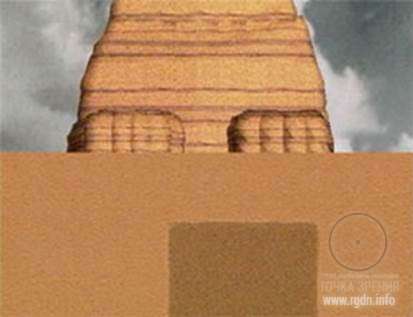

Interestingly enough, geologists working around the Great Sphinx in the early 1990s identified a large rectangular chamber and other “anomalies” in the bedrock directly beneath the monument’s paws. Interestingly, too, it is well known that far below the Sphinx is an underground water table which has been constantly replenished since times immemorial by capillary action from the Nile.
Dr. Jean Kérisel, the eminent French engineer whose work in the Subterranean Chamber of the Great Pyramid we are already familiar with, has recently taken the geological evidence further by suggesting that the Sphinx may stand over the entrance to a 700-metre-long tunnel leading to the Great Pyramid – a tunnel that was once filled or partially filled with water.
Furthermore, in the Pyramid Texts we often hear of a “Causeway of Happiness” which is in the “North of the Field of Offerings”. And in the following passage the Horus-King seems to be standing at the entrance of such a “causeway” at exactly the time Sirius is performing its heliacal rising, i.e. “Heralding the New Year” 70 days after the sun’s crossing of the Milky Way:
“I am the herald of the Year, O Osiris, I have come on business of your father Geb [the earth-god]… I speak to you, I have made you enduring. “Causeway of Happiness” is the name of this causeway north of the Field of Offerings. Stand Up, Osiris, and commend me to those who are in charge of the “Causeway of Happiness” north of the Field of Offerings just as you commended Horus to Isis on that day on which you made her pregnant…”
The “Field of Offerings” had a celestial location in the Duat somewhere near Orion. Dualistic logic therefore suggests that its earthly counterpart must have been a place where “offerings” were made by the Horus-King when he was about to enter the Giza necropolis. With this in mind, it is surely of relevance that many of the New Kingdom sphinx stelae found at Giza, including the granite stela of Thutmosis IV that stands between the paws of the Sphinx itself, do in fact show the Horus-Kings making offerings in a temple in front of the monument. Furthermore, as the text quoted above makes clear, the “Causeway of Happiness” ran to the north of the “Field of Offerings”. An underground “causeway” running north-west from the temple of the Sphinx would lead to the Great Pyramid. So could Kérisel’s bold hypothesis be right? Could such an underground system exist at Giza?
Perhaps, on such an interrogative note I should end the first part. As I’ve written above, the film will be presented below. Since it was released in 1993, you might have already seen it, but as for me I view it again and again with pleasure. In my opinion, it is quite interesting owing to its simplicity and intelligible explanations.
Well, for justice’s sake in the end I decided to “give the floor” to the official opinion (Egyptologists). The opinion is presented by Mark Lehner himself (the most noted, respected and competent Egyptologist who has achieved such an outstanding fame). In the video below he’s not as young as in the 1993 film (where he was Schoch’s opponent). It is noteworthy that young Lehner started his researches in Egypt under the Edgar Cayce Foundation’s support, and his goal then was to prove what Cayce had told about. However, after a certain while Lehner, so to say, defected to the side of official Egyptology which did not recognize what Cayce and others were saying. Lehner explained such a change in his views as follows: I’ve dug for many years, and others dug there before me, but no traces of any civilization that would precede ours have been found in Giza. At that, I guess everything’s very simple with him. If a person engaged in science is in opposition to official views, he becomes a sort of an outcast in his community and is looked at askew for his life. Lehner simply made his choice to become a respected, authoritative Egyptologist. Not many people are ready to choose the outcast way, even if such “outcasts” pursue the TRUTH.
The second documentary was released in 2010, featuring Mark Lehner as one of its main characters. Despite the documentary title Riddles of the Sphinx, I would call it very simply: Lehner Carving a Nose for the Sphinx:
For those who’d like to scrutinize attractions of the Great Pyramids and the Great Sphinx of Giza:
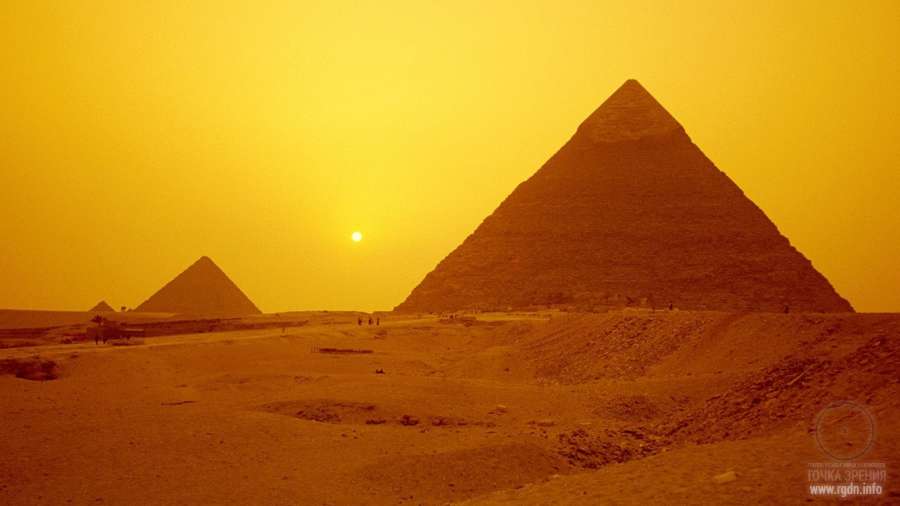
To be continued...
Prepared by Igor
 Keeper of Genesis. Part I
votes:
298
Keeper of Genesis. Part I
votes:
298
|

Project Aim










Leave comment